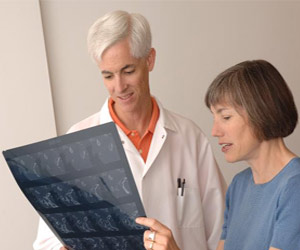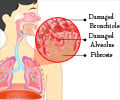Glossary
X-rays: High-energy radiation with waves shorter than those of visible light. X-rays possess the properties of penetrating most substances (to varying extents), of acting on a photographic film or plate (permitting radiography), and of causing a fluorescent screen to give off light (permitting fluoroscopy). In low doses X-rays are used for making images that help to diagnose disease, and in high doses to treat cancer. Formerly called a Roentgen ray.Radiography: The formation of images of the inside of the body using radiation projected through the body and onto film; a radiograph is also called an X-ray.
Pneumothorax: Bursting of the tiny air sacs in the lung tissue.
Emphysema: Pulmonary emphysema is a disorder affecting the alveoli (tiny air sacs) of the lungs. The transfer of oxygen and carbon dioxide in the lungs takes place in the walls of the alveoli. In emphysema, the alveoli become abnormally inflated, damaging their walls and making it harder to breathe. People who smoke or have chronic bronchitis have an increased risk of emphysema.
Cystic fibrosis: A common hereditary disease in which exocrine (secretory) glands produce abnormally thick mucus. This mucus can cause problems in digestion, breathing, and body cooling.
Aneurysms: Localized ballooning of the aorta or an artery, potentially causing pressure on adjacent structures and liability to rupture.












